Lithuania, a beautiful country located in the Baltic region of Europe, is known for its rich history, stunning landscapes, and vibrant culture. As one of the three Baltic states, Lithuania boasts a unique blend of medieval architecture, modern cities, and lush nature. From the picturesque streets of Vilnius to the serene shores of the Curonian Spit, Lithuania offers a diverse range of experiences for travelers. This blog will delve into Lithuania’s geography, regions, history, culture, cuisine, and must-visit destinations, providing a comprehensive overview of this enchanting country.
Table of Contents
Geography
Lithuania covers an area of approximately 65,300 square kilometers, making it the largest of the three Baltic states. The country is bordered by Latvia to the north, Belarus to the east and south, Poland to the southwest, and the Baltic Sea to the west. Its diverse landscape features sandy beaches along the coastline, dense forests, and numerous lakes and rivers.
Lithuania’s capital, Vilnius, is known for its well-preserved medieval old town, a UNESCO World Heritage site. The city is characterized by its baroque architecture and historical significance. The country experiences a temperate continental climate, with warm summers and cold winters, making it ideal for outdoor activities throughout the year.
Lithuania’s natural beauty is complemented by its rich biodiversity, with numerous national parks and protected areas. The country’s forests are home to diverse wildlife, including elk, deer, and various bird species. The stunning landscapes offer opportunities for hiking, cycling, and nature photography, attracting nature enthusiasts and adventure seekers alike.
Regions of Lithuania
The country does not have states. Instead, it is divided into 10 counties (apskritys), which are further subdivided into 60 municipalities. The counties are administrative divisions, each managed by a county governor appointed by the central government. Here is the information about counties and their municipalities in a table form:
| # | County | Municipalities |
|---|---|---|
| 1 | Alytus County | Alytus city, Alytus district, Druskininkai, Lazdijai, Varėna |
| 2 | Kaunas County | Kaunas city, Kaunas district, Jonava, Kėdainiai, Prienai, Raseiniai, Birštonas |
| 3 | Klaipėda County | Klaipėda city, Klaipėda district, Kretinga, Neringa, Palanga, Skuodas, Šilutė |
| 4 | Marijampolė County | Marijampolė, Kalvarija, Kazlų Rūda, Šakiai, Vilkaviškis |
| 5 | Panevėžys County | Panevėžys city, Panevėžys district, Biržai, Kupiškis, Pasvalys, Rokiškis |
| 6 | Šiauliai County | Šiauliai city, Šiauliai district, Akmenė, Joniškis, Kelmė, Pakruojis, Radviliškis |
| 7 | Tauragė County | Tauragė, Jurbarkas, Pagėgiai, Šilalė |
| 8 | Telšiai County | Telšiai, Mažeikiai, Plungė, Rietavas |
| 9 | Utena County | Utena, Anykščiai, Ignalina, Molėtai, Visaginas, Zarasai |
| 10 | Vilnius County | Vilnius city, Vilnius district, Elektrėnai, Šalčininkai, Širvintos, Švenčionys, Trakai, Ukmergė |
History
The country has a storied history that dates back to ancient times. The region was inhabited by various tribes, and in the 13th century, it emerged as a powerful state known as the Grand Duchy of Lithuania. At its height, the Grand Duchy extended from the Baltic Sea to the Black Sea, making it one of the largest countries in Europe. The Grand Duchy played a significant role in European politics and culture, establishing itself as a major player in the region.
In the late 18th century, Lithuania was partitioned by neighboring powers, leading to the dissolution of the Grand Duchy. The region came under the control of the Russian Empire, and the Lithuanian people faced challenges in preserving their language and culture. It was not until after World War I that Lithuania regained its independence in 1918. The newly established state faced numerous challenges, including economic difficulties and political instability.
However, Lithuania’s independence was short-lived, as the country was invaded by the Soviet Union in 1940. During World War II, The country was occupied by both Nazi Germany and the Soviet Union, leading to significant suffering and loss of life. After the war, it remained under Soviet control for several decades.
The country declared independence from the Soviet Union on March 11, 1990, becoming the first Soviet republic to do so. This bold move sparked a wave of independence movements across the region. The country faced numerous challenges during its transition to democracy and a market economy, but it has since made significant progress.
Today, Lithuania is a proud member of the European Union and NATO, embracing its European identity while preserving its unique cultural heritage. The country has become a leader in various sectors, including technology and sustainable development, positioning itself as an important player in the Baltic region.
Top Ten Most Famous Places to Visit
1. Vilnius
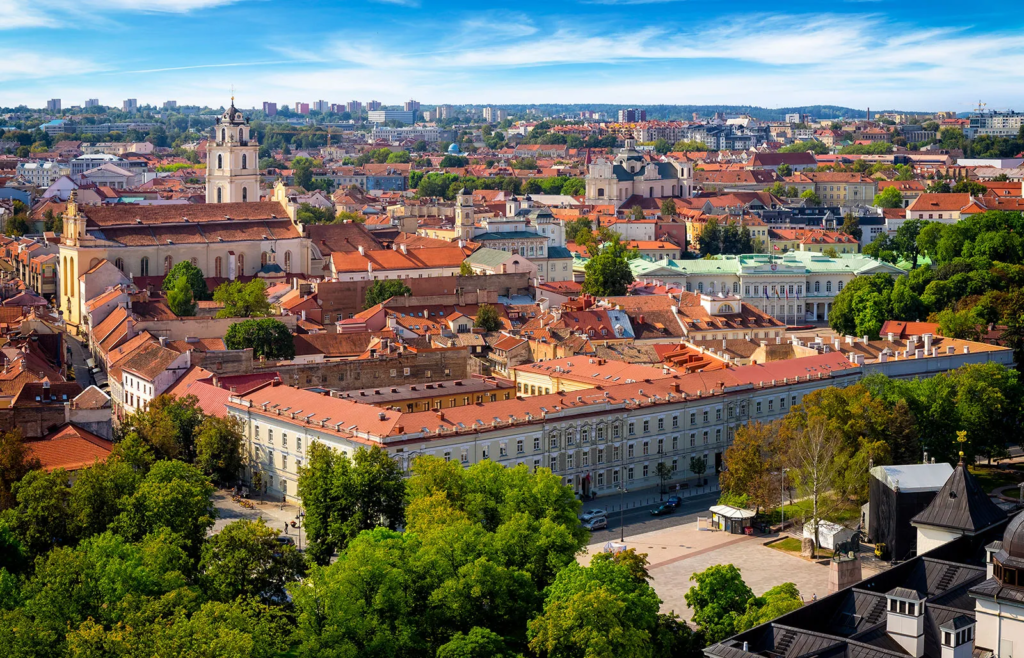
Vilnius, the capital city of Lithuania, is known for its stunning old town, characterized by cobblestone streets and baroque architecture. The city is home to numerous historical sites, including the Vilnius Cathedral, Gediminas Castle, and the Palace of the Grand Dukes. The Vilnius Old Town is a UNESCO World Heritage site and is one of the largest preserved medieval old towns in Europe.
Visitors can explore the narrow streets, visit local cafes, and admire the architecture that reflects the city’s rich history. The city is also a cultural hub, with vibrant arts and music scenes, making it an ideal destination for those looking to immerse themselves in Lithuanian culture.
2. Trakai Castle

Located on an island in Lake Galvė, Trakai Castle is a stunning medieval fortress that dates back to the 14th century. The castle is surrounded by picturesque lakes and forests, making it a popular destination for both history enthusiasts and nature lovers. Visitors can explore the castle’s museum, which showcases artifacts from the region’s history.
Trakai is also famous for its traditional karaim cuisine, particularly its kibinai (savory pastries filled with meat or vegetables), making it a must-visit destination for food lovers.
3. Kaunas
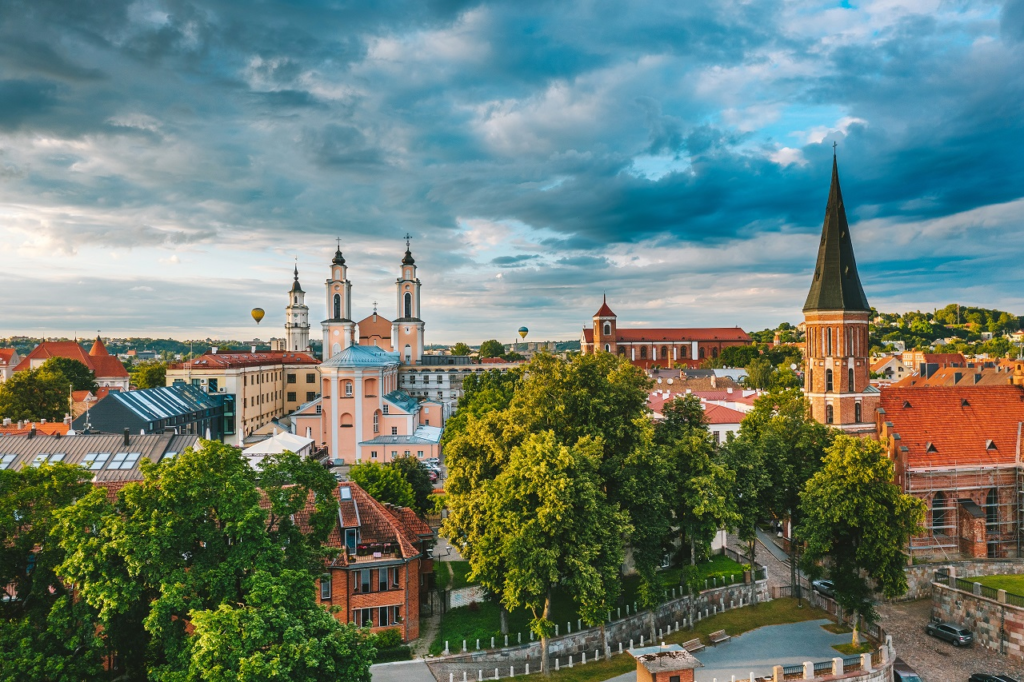
Kaunas, Lithuania’s second-largest city, is known for its interwar architecture and vibrant cultural scene. The city’s highlights include the Kaunas Castle, the Devil’s Museum, and the Maironis Museum of Literature. The city also hosts various festivals and events throughout the year, showcasing local arts and traditions.
Kaunas is also home to the famous Laisvės Alėja, one of the longest pedestrian streets in Europe, lined with cafes, shops, and cultural venues. Visitors can enjoy the lively atmosphere and explore the city’s rich history through its museums and galleries.
4. Klaipeda

Klaipeda is Lithuania’s only port city and offers a unique blend of maritime history and modern attractions. The city’s charming old town features half-timbered houses, cobblestone streets, and a vibrant waterfront area. The Klaipeda Sea Museum provides insight into the region’s maritime heritage, while the nearby Curonian Spit is a UNESCO World Heritage site known for its stunning dunes and beautiful beaches.
Visitors can also enjoy fresh seafood and local delicacies at the city’s numerous restaurants and cafes, making Klaipeda a delightful destination for culinary enthusiasts.
5. Hill of Crosses
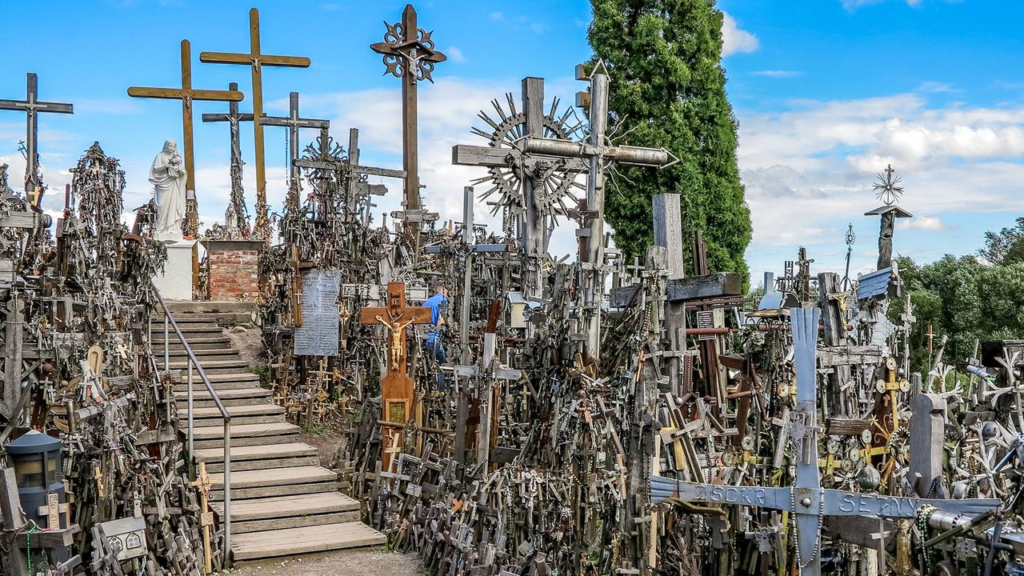
The Hill of Crosses, located near Šiauliai, is a pilgrimage site that features thousands of crosses placed by visitors over the years. This symbolic site represents the Lithuanian people’s faith and resilience and has become an important cultural landmark. The Hill of Crosses is a powerful and moving destination for travelers, offering a unique insight into Lithuania’s spiritual heritage.
Visitors can explore the site, reflect on its significance, and experience the peaceful atmosphere that surrounds this iconic landmark.
6. Curonian Spit

The Curonian Spit is a unique sand dune peninsula that separates the Curonian Lagoon from the Baltic Sea. Known for its breathtaking landscapes, the area is a UNESCO World Heritage site, offering opportunities for hiking, birdwatching, and exploring charming fishing villages. The spit is home to diverse flora and fauna, making it a haven for nature lovers.
Visitors can enjoy the serene beaches, take leisurely walks along the dunes, and visit the picturesque village of Nida, famous for its traditional architecture and stunning sunsets.
7. Vilnius University
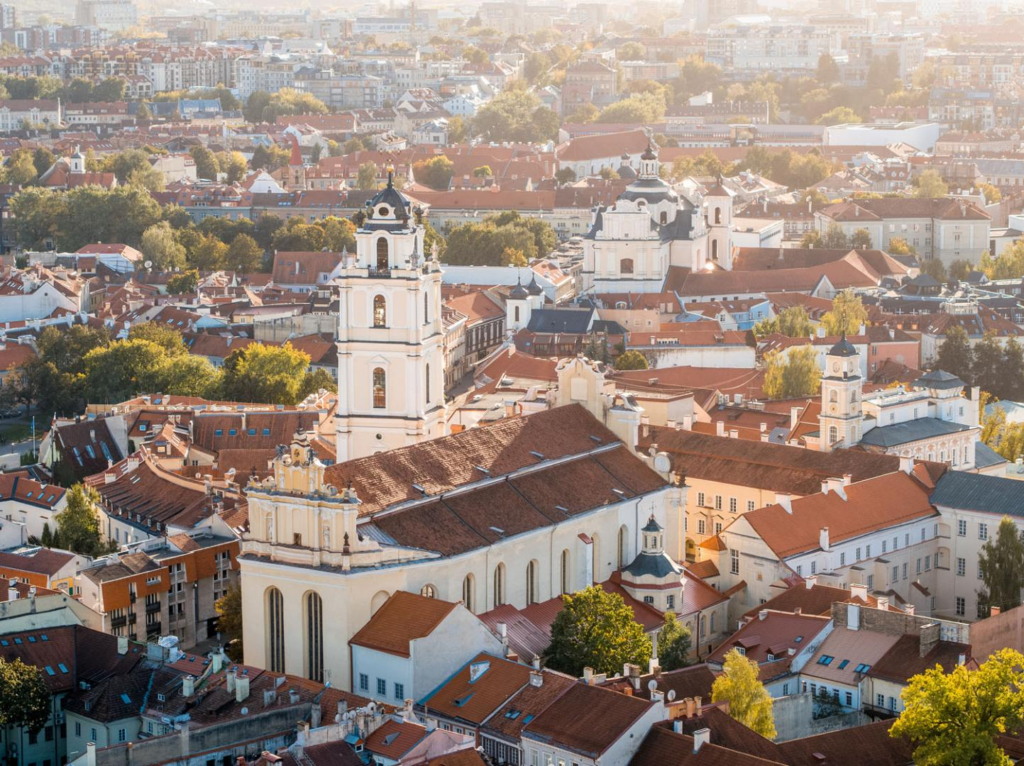
Founded in 1579, Vilnius University is one of the oldest universities in Eastern Europe. The university’s campus features beautiful architecture, including the ornate St. John’s Church and the impressive Grand Courtyard. Visitors can explore the grounds and learn about the university’s significant role in Lithuanian history and culture.
The university hosts various cultural events and exhibitions, making it a vibrant part of Vilnius’s cultural landscape.
8. The National Museum of Lithuania

The National Museum of Lithuania, located in Vilnius, is the largest museum in the country and showcases Lithuania’s rich history and cultural heritage. The museum’s exhibits include archaeological artifacts, historical documents, and art, providing a comprehensive overview of Lithuania’s past.
Visitors can explore the museum’s various sections, including exhibits on ancient history, ethnography, and contemporary art, gaining insight into the country’s diverse heritage.
9. Druskininkai
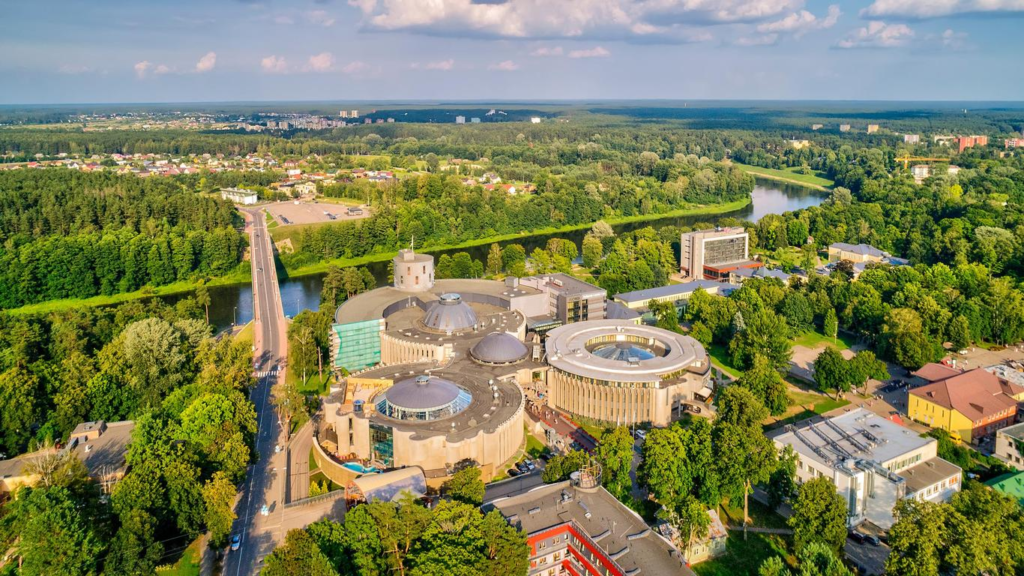
Druskininkai is a popular spa town known for its healing mineral waters and beautiful natural surroundings. Visitors can enjoy various wellness treatments, explore the surrounding forests, and visit the Grūtas Park, which features Soviet-era sculptures and artifacts. The town also offers opportunities for outdoor activities, such as hiking, cycling, and water sports.
Druskininkai is an ideal destination for those seeking relaxation and rejuvenation in a tranquil setting.
10. The Open-Air Museum of Lithuania
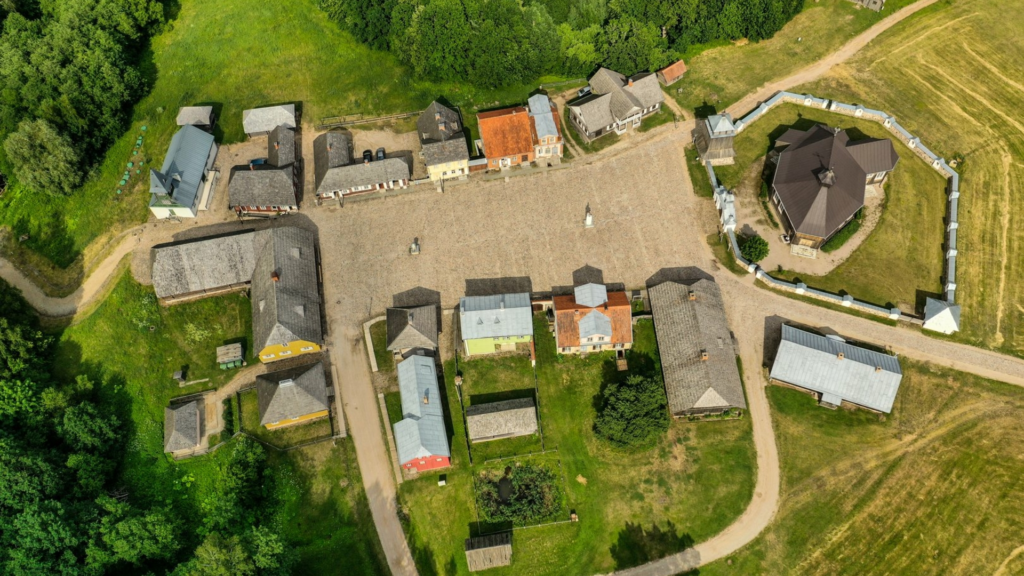
Located near Vilnius, the Open-Air Museum of Lithuania is a unique attraction that showcases traditional Lithuanian rural architecture and lifestyle. Visitors can explore various exhibits, including farmhouses, windmills, and workshops, providing insight into the country’s rural heritage.
The museum hosts cultural events and demonstrations, allowing visitors to experience traditional crafts, music, and dance, making it an enriching experience for those interested in Lithuanian culture.
Culture
Lithuania has a rich cultural heritage, influenced by its history and geographical location. The country is known for its folk traditions, including music, dance, and crafts. Traditional songs, known as “sutartinės,” are an essential part of Lithuanian culture, often performed during festivals and celebrations.
Lithuania also has a thriving contemporary arts scene, with numerous galleries, theaters, and cultural events throughout the year. The country is home to several film festivals, music events, and art exhibitions, showcasing local talent and creativity.
Lithuania’s folk art is particularly notable, with intricate woodwork, textile weaving, and pottery reflecting the country’s traditions and craftsmanship. The vibrant colors and patterns found in Lithuanian textiles, such as woven belts and shawls, are a testament to the skill and creativity of local artisans.
The country celebrates various festivals throughout the year, including Užgavėnės (pre-Lenten festival), Jūratė and Kastytis Festival (celebrating the sea), and the National Festival of Folk Music. These events provide an opportunity for locals and visitors to come together, celebrate traditions, and enjoy music, dance, and delicious food.
Cuisine
Lithuanian cuisine is hearty and flavorful, reflecting the country’s agricultural traditions. Traditional dishes often feature potatoes, rye bread, and various meats, along with seasonal vegetables. Lithuania’s culinary scene is influenced by its history, with flavors from neighboring countries shaping its unique dishes.
One of the most famous dishes is cepelinai, large potato dumplings stuffed with meat, served with a rich sour cream sauce. Other popular dishes include šaltibarščiai, a cold beet soup, and kugelis, a potato pudding baked to perfection.
Lithuania is also known for its traditional rye bread, which is a staple in Lithuanian households. The bread is often served with meals and can be enjoyed with various toppings, such as butter, cheese, or herring.
In addition to savory dishes, Lithuanian cuisine features a variety of sweets, including grybukai (mushroom-shaped cookies) and šakotis (tree cake). These treats are often enjoyed during special occasions and celebrations.
The country has a thriving craft beer scene, with many local breweries producing a range of beers that reflect Lithuania’s brewing traditions. Visitors can explore local pubs and breweries to sample the unique flavors of Lithuanian beer.
Top Eight Most Famous Food Of Lithuania




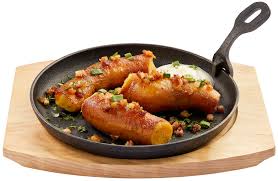
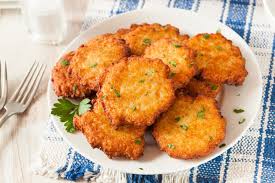


Economy
Lithuania has a diverse and rapidly growing economy, characterized by a strong service sector, manufacturing, and information technology. The country has successfully transitioned from a post-Soviet economy to a modern market economy, attracting foreign investment and promoting entrepreneurship.
Key industries include manufacturing, finance, technology, and logistics. Lithuania is known for its strong banking sector and has become a hub for fintech companies in recent years. The government actively supports innovation and sustainable practices, ensuring continued economic growth.
Lithuania’s economy is also bolstered by its strategic location at the crossroads of Europe and the Baltic region, making it an attractive destination for businesses looking to expand into the European market. The country has invested in infrastructure development, including transportation networks and logistics centers, enhancing its connectivity and competitiveness.
Future Prospective
Lithuania’s future looks promising as it continues to embrace modernization while preserving its rich cultural heritage. The country is focused on sustainable development, innovation, and strengthening its position within the European Union. With its vibrant economy, stunning landscapes, and cultural richness, Lithuania is poised to remain an attractive destination for travelers and investors alike.
The government is committed to promoting green initiatives, renewable energy, and sustainable tourism, ensuring that Lithuania remains a beautiful and welcoming place for future generations. As the country continues to develop, it remains dedicated to preserving its unique identity and cultural heritage while embracing progress and innovation.
Conclusion
Lithuania, with its captivating history, beautiful landscapes, and vibrant culture, offers a unique experience for visitors. From the stunning architecture of Vilnius to the serene beauty of the Curonian Spit, the country is a treasure trove of exploration. Whether you’re indulging in traditional cuisine, immersing yourself in local festivals, or discovering its rich heritage, Lithuania promises an unforgettable journey that will leave you enchanted.
The warmth and hospitality of the Lithuanian people, combined with the country’s rich cultural tapestry, make it an ideal destination for travelers seeking an authentic and enriching experience. As Lithuania continues to evolve, it remains a country that honors its past while embracing the future, making it a must-visit destination in the heart of Europe.
let’s enjoy few years on earth with peace and happiness….✍🏼🙏

